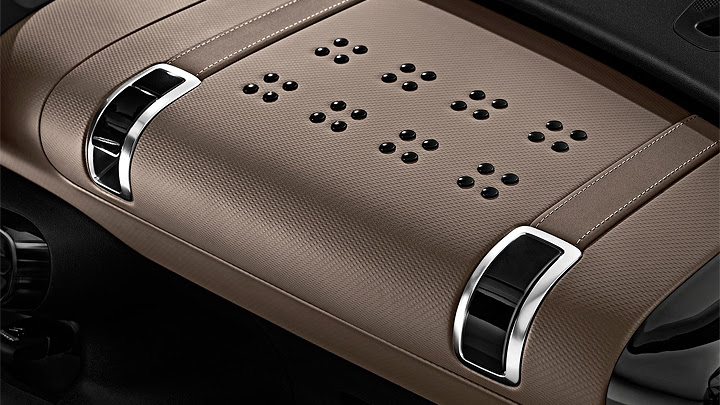
People like innovative cars precisely for their characteristic of bringing new stuff. Whether different style, new equipments, or simply offering to its category something that is common in another one (like sedans’ four doors on coupés or minivans’ high roof on hatchbacks). After the pioneer’s sales start to increase, it doesn’t take long for the competitors to release their own vehicles following very similar characteristics. The thing is, each time a new car arrives offering those, they only lose more and more of the aforementioned innovation. In other words, the public loses interest on what became a bunch of expressions of the same. The tendency regarding this is the car always needs to present some innovation. If the category doesn’t have it anymore, it should create it itself.
And what would be Citroën’s case? If you keep up with the car world’s news, you won’t need more than a “this is a compact crossover”. If you don’t, that sentence means C4’s latest version is entering the small-size department of a category which has received dozens of examples in the past few years, some from automakers which never worked with anything similar before. As if it wasn’t enough, Cactus is a perfect follower of the new path Citroën has chosen for its C-line, which concerns being more affordable and practical and focusing on the everyday use. Yes, pretty much what Nissan started to do with Datsun and Renault does for decades with Dacia. Imagining how many cars there are already on the streets with similar proposals, can you figure how good this one needs to be?







It will take some months until this vehicle gets the most important feedback (it’ll hit the streets in October), but for all it’s known so far, being that good wouldn’t be unlikely for it. Cactus’ talents start with the creative design, whose bubbly shapes manage to look imponent as much as playful. It also looks very different from what is seen on Chevrolet Trax, Ford EcoSport, Opel Mokka or Renault Captur, but this is precisely what Citroën wanted. The car’s lines propose a whole different train of thought, achieving the same SUV-inspired toughness seeked by all its direct competitors without even the slightest possibility of being mistaken for any of them. Love-it-or-hate-it styling is always a bold attitude, but Citroën did the right thing. It was already time for “creating it itself”.
Cactus is interesting because each time you look at it it’s possible to find an interesting thing you hadn’t noticed yet. The most creative are the Airbumps, which appear around headlights and tail lights and at the sides. These are polyurethane sections with air-filled capsules, capable of absorbing light impacts and returning to their original shape. Such technology intends to come in handy against “everyday threats” such as supermarket carts, children’s toys and even some parking manoeuvres without involving the sheetmetal, which will certainly cut repair costs. As the pictures show, Airbumps come in four colors, in order to be matched to those of the external paint. Since Citroën hasn’t mentioned anything about how resistant they are, it’s better to hope that the only cactus that ever approaches this car is its name…







Naming this car a C4 might be hard to comprehend when you know the new car uses PSA’s PF1 platform, which underpins vehicles like Citroën C3 and Peugeot 208. But it’s possible to speculate some reasons for that. After all, PF2 (the mid-size one) is being phased out in favor of EMP2. But the latter is much more sophisticated, and during the first years more expensive too. So using it not only would drive Cactus away from its cost-efficiency appeal as it would also interfere on Peugeot 308’s upscale proposal. Besides, since the current C4 hatchback is aging, if the new car sells well enough the company can perform its intention of redirecting its public to 308 and Cactus. But if you think such amazing exterior is hiding an old-fashioned project, you’re extremely wrong.
Citroën wanted its car to be efficient, more than just cheap. So it received a considerable investment on reducing weight and increasing the space that resulted on some very interesting solutions. The dashboard is only a screen, working along with the infotainment system’s 7” unit and making a great improvement on front visibility. Both seat rows have a bench arrangement, but only the front ones have individual adjustments. The panoramic sunroof uses top-notch sound-proofing and sunlight-protection technologies in order to avoid the sunblind. And there are aluminum and high-strength-steel structure parts, among many other nice particularities. Everything to reach impressive 965 kg at basic versions. The only information about powertrain known so far is that Cactus’ most efficient figures will be 92 g/km of CO2 and 91.1 mpg.